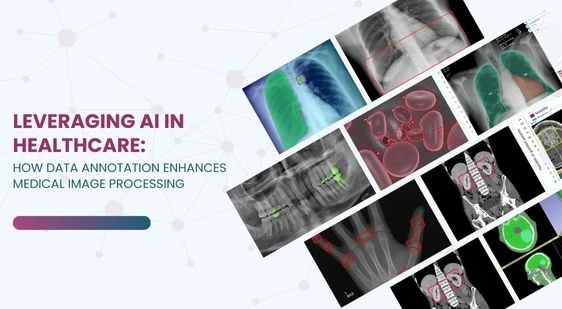Artificial Intelligence (AI) is redefining the landscape of healthcare, particularly in the domain of medical image processing. From diagnosing diseases to predicting outcomes and optimizing treatment protocols, AI systems have demonstrated immense potential. However, their performance is fundamentally dependent on high-quality, annotated datasets.
The Role of Data Annotation in AI for Healthcare
AI models require vast amounts of labeled medical images to learn and generalize. Annotation involves tagging these images with clinical details—such as the presence of tumors, lesions, fractures, or organ abnormalities—which trains AI models to differentiate between healthy and pathological conditions.
In radiology, for example, AI systems trained on annotated image datasets can detect early signs of cancer by comparing new scans against known patterns. This not only enhances diagnostic accuracy but also expedites decision-making, especially in time-sensitive scenarios.
The Importance of High-Quality Data Annotation
The reliability of AI in healthcare hinges on the quality of its training data. Poorly annotated data introduces risks—from diagnostic errors to model bias—undermining the clinical applicability of the technology. On the other hand, precisely labeled images allow AI systems to detect minute deviations in anatomical structures, supporting more accurate diagnoses.
Medical annotation must involve trained professionals such as radiologists or pathologists, whose domain expertise ensures clinical relevance and annotation accuracy. This human-in-the-loop model is essential for building robust AI applications in medicine.
Mitigating Bias in Medical Image Data
AI bias remains a significant challenge in healthcare. When training datasets lack demographic diversity, models may fail to perform well on underrepresented groups. For example, models predominantly trained on male or lighter-skinned individuals may misdiagnose conditions in other populations.
Mitigating bias requires proactive steps:
Collecting data from diverse populations
Ensuring balanced annotations across ethnicities, ages, and genders
Using bias detection tools during training and validation
Balancing Privacy and Utility in Medical AI
Healthcare developers must balance patient confidentiality with the utility of medical image data for training purposes. Approaches such as differential privacy introduce statistical noise to protect individual identity while preserving dataset integrity.
However, developers must validate that these privacy-preserving methods do not compromise the quality of data used to train medical AI systems. The trade-off between privacy and model performance must be continuously assessed and optimized.
Accountability and Ethical Oversight in Medical AI
Healthcare organizations leveraging AI must establish strong data governance protocols. These include:
Secure data storage with encryption and access controls
Regular compliance audits and ethical reviews
Incident response mechanisms for data breaches
Best Practices for Ethical AI in Medical Image Processing
To ensure responsible AI deployment in medical imaging, organizations and developers should adopt the following best practices:
Ongoing Audits: Continuously monitor and improve data annotation quality and fairness.
Legal Compliance: Adhere to data protection regulations such as GDPR and HIPAA.
Feedback Mechanisms: Empower patients with feedback channels and flexible data-sharing preferences.
Expert-Led Annotation: Engage certified clinicians for image labeling to ensure medical accuracy.
ISO-Certified and Audit-Ready
GTS.AI is certified under:
ISO 9001:2015 – for quality management
ISO 27001:2013 – for information security
Conclusion
AI holds tremendous promise in transforming medical diagnostics. But this promise can only be realized through high-quality data annotation, ethical data practices, and inclusive training approaches. When AI models are trained on diverse, well-labeled, and privacy-conscious datasets, they are more likely to deliver clinically valid and fair outcomes. use.







